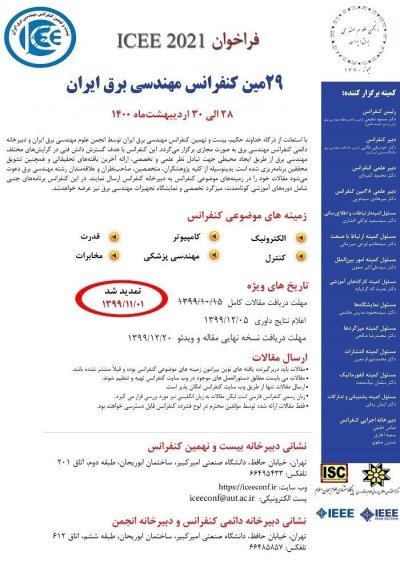0% Complete

نویسندگان :
کلمات کلیدی :
چکیده :
لیست مقالات بایگانی شده
Seyyed Morteza Hashemi - Parvaneh Aliniya - Parvin Razzaghi
S. Ahmad Khalilpour - Ali Hassani - Rohollah Khorambakht - A.R. Zahedi - Abbas Bataleblu - Hamid D. Taghirad
Seyed Hamid Khalkhali - Mohsen Taghizadeh Kejani - Ali Asghar Razi Kazemi
Vahid Ghaffari - Leila Yousefi
Mozhgun Moazzamnia - Javad Nourinia - Changiz Ghobadi - Keyhan Hosseini - Mohsen Karamirad - Baman Mohammadi
Mohammad Khakroei - Mohsen Mostafaei - Mansour Arefian - Afshin Rezaei-Zare - Majid Najafi Zarmehri
Mohammad Amin Yaldagard - Hossein Shamsi
Ahmad Ahmadi Siahpoush - Vahid Shah-Mansouri
Sepehr Kouzegaran - MASOUMEH AZGHANI




